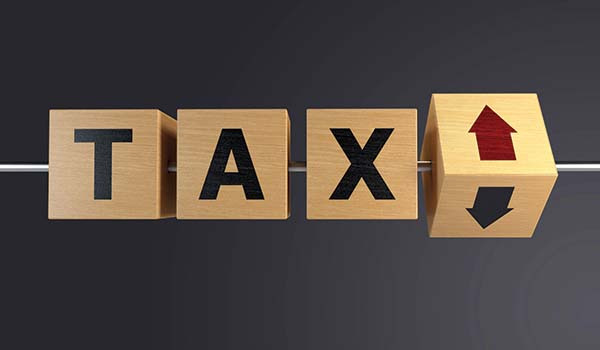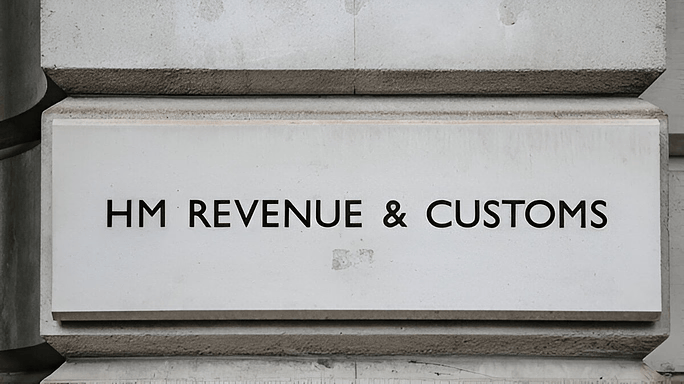
UK Essential Tax Rates and Thresholds 2024/25
When operating your payroll or providing expenses and benefits to your employees, it’s essential to use the correct tax rates and thresholds for the 2024/25 fiscal year. The following figures, unless otherwise stated, are applicable from 6 April 2024 to 5 April 2025. Understanding these rates and thresholds ensures accurate payroll processing and compliance with HMRC regulations, helping you avoid potential penalties and ensuring your employees are taxed correctly.
This guide will provide you with the necessary information to manage your payroll efficiently for the upcoming tax year (2024-2025).

PAYE tax Charges and Class 1 National Insurance contributions
Typically, you manage PAYE (Pay As You Earn) as part of your payroll process, enabling HMRC to collect Income Tax and National Insurance from your employees. Your payroll software will calculate the correct amounts of tax and National Insurance to deduct from your employees’ pay. If you choose to handle payroll yourself, you must obtain payroll software to perform these calculations accurately. You can seek professional advice from experienced accountants like TaxCan or Cangaf Ltd.
UK Income Tax Charges, Thresholds, and Tax Codes 2024/25
The Income charge you deduct from your employees depends on their tax code and how much their earnings exceed their Personal Allowance. The tax code 2024/25 tells you how much tax to take out, which ensures that it’s the right amount based on their income.

England and Northern Ireland
The standard personal tax allowance 2024/25 of an employee working in England and Northern Ireland is:
- £242 weekly
- £1,048 monthly
- £12,570 annually
| PAYE Tax Rate | Rate of Tax | Annual Earnings Range (above the PAYE threshold) |
| Basic rate tax threshold | 20% | Up to £37,700 |
| Higher rate tax threshold 2024/25 | 40% | From £37,701 to £125,140 |
| Additional rate tax threshold | 45% | Above £125,140 |
Scotland
The standard personal tax allowance 2024/25 of an employee working in Scotland is:
- £242 weekly
- £1,048 monthly
- £12,570 yearly
| PAYE Tax Rate | Rate of charge | Annual Earnings Range (above the PAYE threshold) |
| Starter rate tax threshold | 19% | Up to £2,306 |
| Basic rate tax threshold | 20% | From £2,307 to £13,991 |
| Intermediate rate tax threshold | 21% | From £13,992 to £31,092 |
| Higher rate tax threshold 2024/25 | 42% | From £31,093 to £62,430 |
| Advanced rate tax threshold | 45% | From £62,431 to £125,140 |
| Top tax rate | 48% | Above £125,140 |
Wales
The standard personal tax allowance 2024/25 of an employee working in Whales is:
- £242 weekly
- £1,048 monthly
- £12,570 annually
| PAYE Tax Rate | Rate of Charge | Annual Earnings Range (above the PAYE threshold) |
| Basic rate tax threshold | 20% | Up to £37,700 |
| Higher rate tax threshold 2024/25 | 40% | From £37,701 to £125,140 |
| Additional rate tax threshold | 45% | Above £125,140 |
Emergency tax codes
The emergency charge codes 2024/25, effective from 6 April 2024, are given below:
- 1257L W1
- 1257L M1
- 1257L X
A professional accountant like TaxCan Accountant can help you learn more about emergency charge codes for the tax year 2024/25.
Class 1 National Insurance thresholds
National Insurance deductions are applicable only on earnings that exceed the lower earnings limit.
| Class 1 National Insurance thresholds | Year of Charges 2024/25 |
| Lower Earning Limit | £123 weekly£533 monthly£6,396 yearly |
| Primary Threshold | £242 weekly£1,048 monthly£12,570 yearly |
| Secondary Threshold | £175 weekly£758 monthly£9,100 yearly |
| Freeport upper secondary threshold | £481 weekly£2,083 monthly£25,000 yearly |
| Investment Zone upper secondary threshold | £481 weekly£2,083 monthly£25,000 yearly |
| Upper secondary threshold (below 21) | £967 weekly£4,189 monthly£50,270 yearly |
| Apprentice upper secondary threshold(apprentice below25) | £967 weekly£4,189 monthly£50,270 yearly |
| Veterans’ upper secondary threshold | £967 weekly£4,189 monthly£50,270 yearly |
| Upper earnings limit | £967 weekly£4,189 monthly£50,270 yearly |
Class 1 National Insurance rates
Employee Primary contribution rates
Make primary contributions deductions on account of National Insurance from your employees’ payout through PAYE as per the following rates for the tax year 2024/25.
| National Insurance Category Letter | Earnings at or above the lower earnings limit up to and including the primary threshold | Earnings above the primary threshold up to and including the upper earnings limit | Balance of earnings above the upper earnings limit |
| A | 0% | 8% | 2% |
| B | 0% | 1.85% | 2% |
| C | nil | nil | nil |
| D (Investment Zone — deferment) | 0% | 2% | 2% |
| E (Investment Zone — married women and widows reduced rate) | 0% | 1.85% | 2% |
| F (Freeport) | 0% | 8% | 2% |
| H (apprentice below 25) | 0% | 8% | 2% |
| I (Freeport — married women and widows reduced rate) | 0% | 1.85% | 2% |
| J | 0% | 2% | 2% |
| K (Investment Zone — state pensioner) | nil | nil | nil |
| L (Freeport — deferment) | 0% | 2% | 2% |
| M (below 21) | 0% | 8% | 2% |
| N (Investment Zone) | 0% | 8% | 2% |
| S (Freeport — state pensioner) | nil | nil | nil |
| V (veteran) | 0% | 8% | 2% |
| Z (below 21 — deferment) | 0% | 2% | 2% |
Employer Secondary Contribution Rates
You, as an employer, must pay secondary contributions on the account of National Insurance to HMRC in your PAYE bill for the tax year 2024/25.
| National Insurance Category Letter | Earnings at or above lower earnings limit up to and including secondary threshold | Earnings above secondary threshold up to and including Freeport and Investment Zone upper secondary thresholds | Earnings above Freeport and Investment Zone upper secondary thresholds up to and including upper earnings limit, upper secondary thresholds for below 21s, apprentices, and veterans | Balance of earnings above upper earnings limit, upper secondary thresholds for below 21s, apprentices, and veterans |
| A | 0% | 13.8% | 13.8% | 13.8% |
| B | 0% | 13.8% | 13.8% | 13.8% |
| C | 0% | 13.8% | 13.8% | 13.8% |
| D (Investment Zone — deferment) | 0% | 0% | 13.8% | 13.8% |
| E (Investment Zone — married women and widows reduced rate) | 0% | 0% | 13.8% | 13.8% |
| F (Freeport) | 0% | 0% | 13.8% | 13.8% |
| H (apprentice below25) | 0% | 0% | 0% | 13.8% |
| I (Freeport — married women and widows reduced rate) | 0% | 0% | 13.8% | 13.8% |
| J | 0% | 13.8% | 13.8% | 13.8% |
| K (Investment Zone — state pensioner) | 0% | 0% | 13.8% | 13.8% |
| L (Freeport — deferment) | 0% | 0% | 13.8% | 13.8% |
| M (below 21) | 0% | 0% | 0% | 13.8% |
| N (Investment Zone) | 0% | 0% | 13.8% | 13.8% |
| S (Freeport — state pensioner) | 0% | 0% | 13.8% | 13.8% |
| V (veteran) | 0% | 0% | 0% | 13.8% |
| Z (below 21 — deferment) | 0% | 0% | 0% | 13.8% |
Class 1A National Insurance: Benefits & Expenses
You must make payment on account of Class 1A National Insurance for work benefits that you provide to your employees, including a company mobile device. You must report & pay Class 1A on expenses as well as benefits annually at the end of each tax year.
The National Insurance Class 1A rate on benefits and expenses is 13.8% for the tax year 2024/25.
Class 1A National Insurance: Contributions for Termination Awards and Sporting Testimonial Payments
You need to pay Class 1A National Insurance on termination awards over £30,000 and sporting testimonial payments over £100,000. These payments should be reported and paid as part of your payroll during the tax year.
The Class 1A National Insurance rate for termination awards and sporting testimonial payments for the tax year 2024/25 is 13.8%.
Class 1B National Insurance: PAYE Settlement Agreements (PSAs)
If you have a PAYE Settlement Agreement (PSA), you pay Class 1B National Insurance. This agreement allows you to make a single annual payment to cover all the tax and National Insurance owed on small or irregular taxable expenses or benefits for your employees.
The National Insurance Class 1B rate for the tax year 2024/25 is 13.8%.
National Minimum Wage
The National Minimum Wage ensures that almost all workers receive a legally mandated minimum pay per hour. The rates for the National Minimum Wage are effective from 1 April 2024.
| Worker’s Category | Hourly Rate |
| Aged 21 and above (national living wage rate) | £11.44 |
| Aged 18 to 20 inclusive | £8.60 |
| Aged below 18 (but above compulsory school leaving age) | £6.40 |
| Apprentices aged below 19 | £6.40 |
| Apprentices aged 19 and above but in the first year of apprenticeship | £6.40 |
Statutory Paternity, Maternity, Adoption, Parental Bereavement, and Shared Parental Pay
You can determine various entitlements, such as Statutory Maternity Pay (SMP) and paternity or adoption pay, identify the qualifying week, assess average weekly earnings, and establish the duration of the leave period. These rates are effective from 7 April 2024.
| Type of payment or recovery | Rate for 2024/25 |
| Statutory Maternity Pay —Per week rate for the first 6 weeks | 90% of the employee’s average weekly earnings |
| Statutory Maternity Pay —Per week rate for the remaining weeks | 90% or £184.03 of the employee’s average weekly earnings (whichever is lower) |
| Statutory Paternity Pay (SPP) —Per week rate | 90% or £184.03 of the employee’s average weekly earnings (whichever is lower) |
| Statutory Adoption Pay (SAP) —Per week for the first 6 weeks | 90% of the employee’s average weekly earnings |
| SAP —weekly rate for the remaining weeks | 90% or £184.03 of the employee’s average weekly earnings (whichever is lower) |
| Statutory Parental Bereavement Pay (SPBP) — per week rate | 90% or £184.03 of the employee’s average weekly earnings (whichever is lower) |
| SMP, SPP, ShPP, SAP, or SPBP — recoverable proportion of your payments from HMRC | 92%, if your total Class 1 National Insurance, including employee and employer contributions, is more than £45,000 for the previous tax year 103% if your total Class 1 National Insurance for the last tax year is £45,000 or lower |
Statutory Sick Pay (SSP)
The Statutory Sick Pay rate is the same for all employees. However, how much you pay an employee for each day they’re off work because of a health problem depends on how many days they normally work each week. This is called the daily rate of Statutory Sick Pay.
| Unrounded daily rates | No. of qualifying days in a week |
| £16.6785 | 7 |
| £19.4583 | 6 |
| £23.35 | 5 |
| £29.1875 | 4 |
| £38.9166 | 3 |
| £58.375 | 2 |
| £116.75 | 1 |
Qualifying days in a week: 7 days
Utilize these rates to determine SSP payable to an employee who works for 7 qualifying days in a week.
| Number of days to pay | Amount to be paid |
| 1 | £16.68 |
| 2 | £33.36 |
| 3 | £50.04 |
| 4 | £66.72 |
| 5 | £83.40 |
| 6 | £100.08 |
| 7 | £116.75 |
Qualifying days in a week: 6 days
Here are SSP amount for an employee who is available at work for 6 qualifying days in a week.
| Number of days to pay | Amount to be paid |
| 1 | £19.46 |
| 2 | £38.92 |
| 3 | £58.38 |
| 4 | £77.84 |
| 5 | £97.30 |
| 6 | £116.75 |
Qualifying days in a week: 5 days
Use these SSP amount to pay an employee who is working on 5 qualifying days in a week.
| Number of days to pay | Amount to be paid |
| 1 | £23.35 |
| 2 | £46.70 |
| 3 | £70.05 |
| 4 | £93.40 |
| 5 | £116.75 |
Qualifying days in a week: 4 days
For an employee who works on 4 qualifying days in a week, these SSP amounts are applicable.
| Number of days to pay | Amount to be paid |
| 1 | £29.19 |
| 2 | £58.38 |
| 3 | £87.57 |
| 4 | £116.75 |
Qualifying days in a week: 3 days
For an employee who works on 3 qualifying days in a week, these SSP amounts are applicable.
| Number of days to pay | Amount to be paid |
| 1 | £38.92 |
| 2 | £77.84 |
| 3 | £116.75 |
Qualifying days in a week: 2 days
These SSP amounts are applicable to an employee who is available at work on 2 qualifying days in a week.
| Number of days to pay | Amount to be paid |
| 1 | £58.38 |
| 2 | £116.75 |
Qualifying days in a week: 1 day
If an employee works on one qualifying day in a week, you must pay him/her the following amount.
| Number of days to pay | Amount to be paid |
| 1 | £116.75 |
Student loan & postgraduate loan recovery
If any employees’ earnings are more than the earnings threshold, you can calculate and automatically deduct their student loan & postgraduate loan deduction amounts from their pay with the help of the payroll software.
A professional accountant can also help you calculate their deductions accurately.
Student loan plan 1: Employee earnings threshold for Tax Year 2024/25
- £24,990 annually
- £2,082.50 monthly
- £480.57 weekly
Student loan plan 2: Employee earnings threshold for Tax Year 2024/25
- £27,295 annually
- £2,274.58 monthly
- £524.90 weekly
Student loan plan 3: Employee earnings threshold for Tax Year 2024/25
- £31,395 annually
- £2,616.25 monthly
- £603.75 weekly
Student loan deductions: 9%
Postgraduate loan: Employee earnings threshold for Tax Year 2024/25
- £21,000 annually
- £1,750 monthly
- £403.84 weekly
Postgraduate loan deductions: 6%
Learn more about student loan repayments.
Advisory Fuel Rates for Company Cars
If you provide company cars to employees, then you can determine mileage costs using the following rates (effective from 1 March 2024).
| Size of Engine | Amount per mile (Petrol) | Amount per mile (LPG) |
| 1400cc or less | 13 pence | 11 pence |
| 1401cc to 2000cc | 15 pence | 13 pence |
| Over 2000cc | 24 pence | 21 pence |
| Size of Engine | Amount per mile (Diesel) |
| 1600cc or less | 12 pence |
| 1601cc to 2000cc | 14 pence |
| Over 2000cc | 19 pence |
For this purpose, hybrid cars are considered either diesel or petrol cars.
From 1 March 2024, the advisory electricity rate (per mile) for fully electric cars is 9 pence. This is because electricity is not any fuel type for car fuel benefit purposes.
Mileage Allowance Payments for Employee Vehicles
The amount paid to your employees for using their personal vehicles for business purposes is called a Mileage allowance payment.
You can pay your employees a set amount for mileage each year without reporting it to HMRC. To figure out this amount, multiply the number of miles your employee drives for work by the rate per mile for their vehicle.
Here are the mileage allowance rates per business mile for the tax year 2024/25 for different vehicle types.
- Car
For tax purposes, you can pay 45 pence per mile for the first 10,000 business miles in the tax year 2024/25 and then 25 pence per mile for any additional miles.
For National Insurance purposes, you can pay 45 pence per mile for all business miles.
- Motorcycle
For both tax and National Insurance purposes, you can pay 24 pence per mile for all business miles.
- Cycle
For both tax and National Insurance purposes, you can pay 20 pence per mile for all business miles.
Employment Allowance
Employment Allowance lets eligible employers reduce their annual National Insurance liability by up to the specified allowance amount. For the tax year 2024/25, the Employment Allowance rate is £5,000.
Apprenticeship Levy
Employers and connected companies with a total annual pay bill of more than £3 million are required to pay the Apprenticeship Levy every month. Employers who are not connected to another company or charity receive an annual allowance that reduces the amount of Apprenticeship Levy they need to pay. The levy is calculated as a percentage of the annual pay bill.
For the 2024 to 2025 tax year:
- Apprenticeship Levy Allowance: £15,000
- Apprenticeship Levy Charge: 0.5%

Conclusion:
Understanding the UK Tax rates, thresholds, and tax codes 2024/25 is critical for payroll accuracy and HMRC compliance. This helps avoid penalties and ensure employees are taxed correctly. Professional firms like TaxCan and Cangaf Ltd. offer expert assistance in managing these complexities and ensuring smooth payroll operations & peace of mind.


